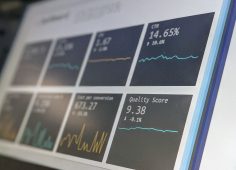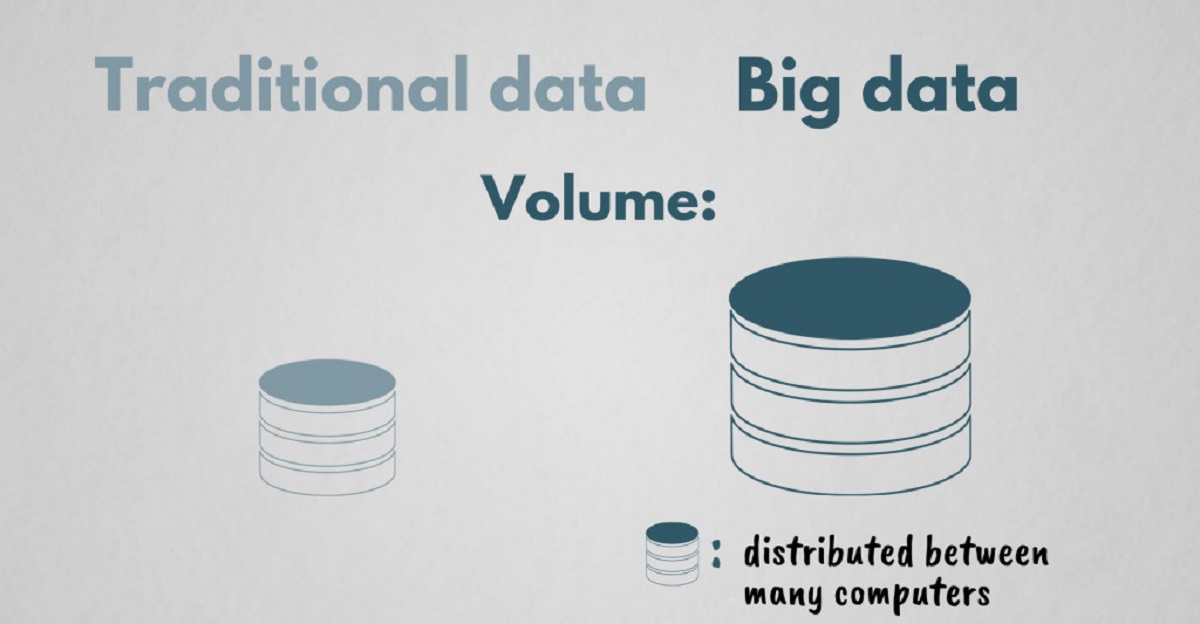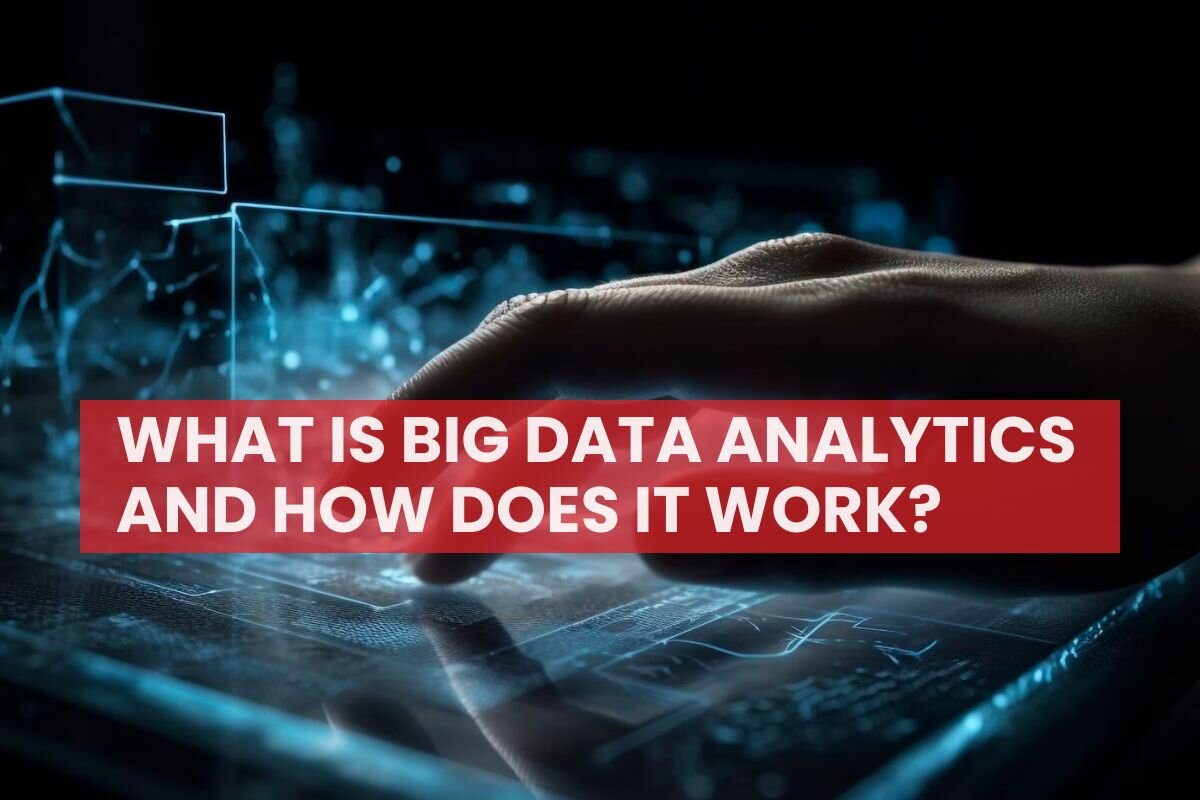Introduction
Big data has become a buzzword in today’s digital world. As technology evolves, organizations are generating vast amounts of data, ranging from customer transactions and social media interactions to website traffic and IoT (Internet of Things) sensor data. This explosion of data has created new opportunities and challenges for businesses across various industries.
But what exactly is big data? In simple terms, it refers to the large, complex sets of data that cannot be effectively managed, processed, or analyzed using traditional data processing methods. These datasets are characterized by their volume, velocity, and variety, and are often referred to as the “3Vs” of big data.
Big data solutions have emerged as a key enabler for businesses to make sense of this overwhelming amount of information. By leveraging advanced technologies and analytics techniques, organizations can extract valuable insights and make data-driven decisions to drive innovation, optimize processes, and enhance customer experiences.
In this article, we will explore the concept of big data solutions in greater detail. We will discuss the importance of these solutions, the architecture of a typical big data solution, the components involved, and the tools and technologies used. Additionally, we will examine the benefits that businesses can derive from implementing big data solutions, as well as the challenges they may encounter along the way.
Moreover, we will delve into real-world examples of organizations that have successfully implemented big data solutions, showcasing the transformative impact these solutions can have across various industries.
By the end of this article, you will have a comprehensive understanding of big data solutions and how they can be leveraged to drive business success in the age of digitization.
Definition of Big Data
Big data refers to large and complex datasets that are difficult to manage, process, and analyze using traditional data processing methods. It is characterized by the three V’s: volume, velocity, and variety. Volume refers to the massive amount of data generated daily from various sources such as social media platforms, sensors, and transactions. Velocity refers to the speed at which data is being generated, requiring real-time or near-real-time processing and analysis. Variety refers to the diverse types of data, including structured data (e.g., databases), semi-structured data (e.g., XML), and unstructured data (e.g., text, images, videos).
Big data goes beyond the traditional structured data found in databases. It includes unstructured and semi-structured data, which accounts for a significant portion of the data generated today. This unstructured and semi-structured data brings challenges in terms of storage, processing, and analysis, as it may not fit well into conventional data models.
Another aspect of big data is the concept of data velocity. With the advent of the Internet of Things (IoT) and real-time data streaming, data is being generated at an unprecedented speed. Businesses need to capture, process, and analyze this data in real-time to gain valuable insights and make timely decisions.
In addition to volume and velocity, big data is also characterized by its variety. This includes data from various sources and formats, such as social media, weblogs, emails, images, videos, and more. Managing and analyzing such diverse types of data requires advanced techniques and tools that can handle the complexity and variety of big data.
It is important to note that big data is not just about the size of the dataset. It encompasses the complexity and challenges associated with managing, processing, and extracting insights from large and diverse datasets. The goal of big data solutions is to enable organizations to unlock the value hidden within these datasets and utilize them for better decision-making, improved efficiency, and enhanced customer experiences.
Importance of Big Data Solutions
Big data solutions play a crucial role in today’s data-driven business landscape. Here are several reasons why big data solutions are important:
- Data-driven decision-making: Big data solutions enable organizations to make informed decisions based on a deep understanding of their data. By analyzing large and diverse datasets, businesses can identify patterns, trends, and correlations that lead to actionable insights. These insights empower decision-makers to implement effective strategies, optimize operations, and stay ahead of the competition.
- Improved customer experiences: Big data solutions help organizations understand their customers at a granular level. By collecting and analyzing customer data, businesses can gain insights into preferences, behaviors, and needs. This allows them to personalize marketing efforts, deliver targeted recommendations, and create tailored experiences that drive customer satisfaction and loyalty.
- Enhanced operational efficiency: Big data solutions enable organizations to optimize their operations by identifying inefficiencies, bottlenecks, and areas for improvement. By analyzing large datasets, businesses can uncover insights that lead to streamlined processes, reduced costs, and increased productivity. For example, predictive analytics can help organizations anticipate maintenance needs, prevent downtime, and improve overall operational efficiency.
- Identifying market trends and opportunities: By analyzing big data, businesses can gain valuable insights into market trends, customer preferences, and emerging opportunities. This allows them to adapt their products and services to meet changing demands, identify new market segments, and stay ahead of competitors. Big data solutions provide organizations with the information they need to make data-driven strategic decisions and seize competitive advantages.
- Risk management and fraud detection: Big data solutions are instrumental in identifying and mitigating risks, as well as detecting fraudulent activities. By analyzing large datasets and utilizing advanced analytics techniques, organizations can identify unusual patterns, anomalies, and potential fraud in real-time. This proactive approach enables businesses to protect their assets, minimize financial losses, and maintain the trust of their customers.
In summary, big data solutions offer organizations the ability to harness the power of data for better decision-making, improved customer experiences, enhanced operational efficiency, market insights, and risk management. By leveraging big data solutions, businesses can gain a competitive edge in today’s data-driven economy and thrive in a rapidly evolving business landscape.
Understanding Big Data Solution Architecture
Big data solution architecture refers to the design and structure of a system that enables organizations to collect, store, process, and analyze large and complex datasets. It involves various components and technologies working together to handle the volume, velocity, and variety of big data.
At a high level, a typical big data solution architecture consists of the following layers:
- Data Sources: This layer involves data collection from diverse sources such as social media platforms, IoT devices, transactional databases, weblogs, and more. The data may be structured, semi-structured, or unstructured in nature.
- Data Ingestion: Once the data is collected, it needs to be ingested into the big data solution for further processing. This step involves extracting, transforming, and loading the data into a data storage system, which can be a distributed file system like Hadoop HDFS or a cloud-based storage service.
- Data Storage: The data storage layer is responsible for storing the ingested data in a scalable and efficient manner. This can be achieved through distributed file systems, NoSQL databases, or cloud-based storage solutions. The choice of data storage technology depends on the specific requirements of the organization.
- Data Processing: In this layer, the ingested data is processed to extract meaningful insights. This involves various techniques such as batch processing, real-time stream processing, machine learning, and predictive analytics. Distributed processing frameworks like Apache Spark and Apache Flink are commonly used for efficient data processing.
- Data Analysis: Once the data is processed, it needs to be analyzed to derive valuable insights. This layer involves applying statistical models, data mining algorithms, and visualization techniques to uncover patterns, trends, and correlations in the data. Business intelligence tools, data visualization software, and machine learning algorithms play a crucial role in this stage.
- Data Presentation: The final layer of the architecture focuses on presenting the analyzed data in a user-friendly and actionable format. This can be achieved through interactive dashboards, reports, and visualizations. The goal is to enable decision-makers to easily consume and interpret the insights derived from the big data solution.
It is important to note that the architecture of a big data solution can vary based on the specific requirements and challenges of an organization. Some organizations may opt for on-premises infrastructure, while others may leverage cloud-based solutions for scalability and flexibility. Similarly, the choice of technologies and tools within each layer may vary depending on factors such as data volume, processing speed, analysis requirements, and budget constraints.
In summary, big data solution architecture encompasses the design and integration of components and technologies that enable organizations to collect, store, process, and analyze large and complex datasets. It follows a logical flow from data sources to data ingestion, storage, processing, analysis, and presentation. By understanding the architecture of a big data solution, organizations can effectively harness the power of big data to drive insights and make data-driven decisions.
Components of Big Data Solution
A big data solution comprises several key components that work together to enable effective management, processing, and analysis of large and diverse datasets. These components include:
- Data Sources: The first component of a big data solution is the diverse range of data sources. These sources can include structured data from databases, semi-structured data from XML files or JSON documents, and unstructured data from sources like social media platforms, emails, videos, and more. Data sources are the starting point from which data is collected and ingested into the big data solution for further processing.
- Data Ingestion: Once the data sources are identified, the next component is the data ingestion process. This component involves extracting data from its source, transforming it into a suitable format, and then loading it into the big data solution’s storage infrastructure. Data ingestion can be achieved through various techniques such as batch processing, real-time streaming, or directly integrating with data sources using APIs.
- Data Storage: The data storage component refers to the storage infrastructure used to store the ingested data. This component plays a crucial role in managing the volume, velocity, and variety of big data. Traditional relational databases may not be sufficient for handling big data, so other storage technologies like distributed file systems (e.g., Hadoop HDFS), NoSQL databases (e.g., MongoDB, Cassandra), or cloud-based storage solutions are commonly used.
- Data Processing: The data processing component involves various techniques and tools used to process and analyze the stored data. This can include batch processing frameworks like Apache Hadoop and Apache Spark for handling large volumes of data, real-time stream processing systems like Apache Kafka and Apache Flink for processing data in real-time, and machine learning algorithms for advanced analytics and predictive modeling.
- Data Analysis: This component focuses on extracting valuable insights from the processed data. It involves the use of various statistical and analytical techniques, such as data mining, text analysis, sentiment analysis, and predictive modeling. Data visualization tools are often employed to present the analyzed results in a meaningful and visual format.
- Data Governance and Security: Ensuring data governance and security is a critical component of any big data solution. This involves establishing proper data governance policies, access controls, and data protection mechanisms. Compliance with regulations, such as GDPR and HIPAA, is of utmost importance to maintain data integrity and protect sensitive information.
- Data Integration: Data integration is a key component that enables the seamless flow of data between different systems and applications. This component involves integrating the big data solution with existing data systems, business intelligence tools, and other applications to facilitate data sharing and enable cross-functional analysis.
The components mentioned above work together to form a cohesive big data solution. It is important to note that the specific components and their configuration may vary based on the requirements and objectives of the organization. The choice of components should align with the organization’s data strategy, analytical needs, scalability requirements, and budget considerations.
By understanding the components of a big data solution, organizations can design and implement robust architectures that enable efficient and effective handling of large and complex datasets, unlocking the potential of big data for informed decision-making and driving business success.
Tools and Technologies for Big Data Solution
There are several powerful tools and technologies available that facilitate the implementation of big data solutions. These tools and technologies are designed to handle the unique challenges associated with managing, processing, and analyzing large and complex datasets. Here are some commonly used ones:
- Hadoop: Apache Hadoop is an open-source framework that provides a scalable and distributed computing environment for processing big data. It includes the Hadoop Distributed File System (HDFS) for distributed storage and the MapReduce programming model for parallel processing of data across multiple nodes. Hadoop is widely used for batch processing and large-scale data analysis.
- Apache Spark: Apache Spark is a fast and general-purpose distributed processing framework that supports both batch processing and real-time stream processing. It provides in-memory data processing, enabling faster execution of complex analytics tasks. Spark also comes with libraries for machine learning (Spark MLlib) and graph processing (GraphX), making it a versatile tool for big data analytics.
- NoSQL Databases: Traditional relational databases may not be suitable for handling the volume and variety of big data. NoSQL databases, such as MongoDB, Cassandra, and HBase, offer flexible data models and horizontal scalability. These databases are designed to handle large amounts of unstructured and semi-structured data, making them ideal for big data solutions.
- Apache Kafka: Apache Kafka is a distributed streaming platform that is commonly used for real-time data streaming and event-driven architectures. It provides reliable and scalable data ingestion, allowing for continuous and high-throughput streaming of data. Kafka is often used for ingesting and processing large volumes of data in real-time, making it a key tool for big data solutions.
- Data Warehousing Tools: Big data solutions may require the integration and analysis of both traditional structured data and large-scale unstructured data. Data warehousing tools, such as Amazon Redshift, Google BigQuery, and Snowflake, offer scalable and efficient storage and analysis of structured data. These tools enable organizations to combine and analyze data from various sources in a centralized repository.
- Data Visualization Tools: Data visualization is essential for presenting and understanding complex big data insights. Tools such as Tableau, Power BI, and QlikView provide interactive dashboards and visualizations that convey information in a comprehensive and intuitive manner. These tools enable users to explore data, identify patterns, and gain actionable insights from large datasets.
- Machine Learning Frameworks: Machine learning plays a crucial role in big data analytics. Frameworks such as TensorFlow, PyTorch, and scikit-learn provide the necessary tools and algorithms for building and deploying machine learning models at scale. These frameworks enable organizations to extract valuable insights, perform predictive analytics, and automate decision-making processes.
It is important to note that the selection of tools and technologies for a big data solution depends on factors such as the specific use case, the volume and velocity of data, the required analytical capabilities, and the organization’s infrastructure and budget constraints.
By leveraging the appropriate tools and technologies, organizations can effectively manage and extract value from their big data, gaining insights that drive decision-making, optimize operations, and enhance business outcomes.
Benefits of Big Data Solutions
Implementing big data solutions offers numerous benefits to organizations across various industries. Here are some key advantages of leveraging big data solutions:
- Data-driven decision-making: By analyzing large and diverse datasets, big data solutions enable organizations to make data-driven decisions. These decisions are based on real-time insights and deep understanding of customer behavior, market trends, and operational inefficiencies. Data-driven decision-making improves accuracy, reduces guesswork, and increases the likelihood of successful outcomes.
- Improved customer experiences: Big data solutions provide organizations with a holistic view of their customers. By analyzing customer interactions, preferences, and purchase history, businesses can personalize marketing efforts, deliver targeted recommendations, and tailor experiences to individual customer needs. This leads to increased customer satisfaction, loyalty, and retention.
- Enhanced operational efficiency: Big data solutions help organizations identify operational inefficiencies and optimize processes. By analyzing data from various sources, businesses can streamline operations, identify bottlenecks, and allocate resources more effectively. This leads to cost savings, improved productivity, and better resource management.
- Effective risk management and fraud detection: Big data solutions enable organizations to proactively identify and mitigate risks. By analyzing large volumes of data in real-time, businesses can detect anomalies and patterns that indicate potential fraudulent activities or security breaches. Early detection allows organizations to take immediate action, minimizing financial losses and protecting their reputation.
- Greater competitive advantage: Big data solutions provide organizations with a competitive edge by allowing them to uncover actionable insights and market trends. By leveraging data analytics, businesses can identify new market opportunities, adjust their strategies, and stay ahead of the competition. Big data solutions enable organizations to be agile and responsive in a fast-paced business environment.
- Improved product and service development: Big data solutions enable organizations to gather feedback and insights from customers in real-time. By analyzing customer sentiments, user behavior, and feedback data, businesses can gain valuable insights for product and service development. This helps organizations align their offerings with customer needs, preferences, and market demands, leading to improved innovation and customer satisfaction.
- Enhanced marketing and targeted advertising: Big data solutions enable organizations to optimize their marketing efforts. By analyzing customer data and market trends, businesses can target their advertising campaigns more effectively, personalize messaging, and deliver relevant offers to specific customer segments. This leads to higher conversion rates, increased customer engagement, and improved return on investment (ROI).
Overall, big data solutions empower organizations to make better decisions, optimize operations, mitigate risks, and gain a competitive advantage. By harnessing the power of big data, businesses can unlock valuable insights that drive growth, innovation, and improved business outcomes.
Challenges in Implementing Big Data Solutions
While big data solutions offer immense potential for organizations, their implementation is not without challenges. Here are some common challenges that organizations may face when implementing big data solutions:
- Data Quality and Integration: Data quality is a critical challenge in big data solutions. Ensuring that the data collected is accurate, consistent, and reliable can be difficult, especially when dealing with large volumes of diverse data from multiple sources. Additionally, integrating data from various sources can be complex, requiring mapping, transformation, and cleaning processes to ensure compatibility and consistency.
- Data Security and Privacy: With large amounts of data being collected and stored, the security and privacy of that data become major concerns. Organizations need to implement robust security measures to protect data from breaches, unauthorized access, and cyber threats. Furthermore, complying with data protection laws and regulations, such as GDPR and HIPAA, adds another layer of complexity to ensuring data security and privacy.
- Infrastructure Scalability: Big data solutions require scalable infrastructure to handle the volume, velocity, and variety of data. Scaling up can be challenging due to the need for additional hardware, storage, and computational resources. Organizations need to plan and invest in infrastructure that can meet current and future data processing needs while ensuring optimal performance.
- Data Governance and Compliance: Establishing effective data governance practices is crucial for successful big data implementation. Organizations need to define data ownership, access controls, and usage policies. Ensuring compliance with industry regulations can be complex, as it requires understanding and adhering to legal and ethical guidelines governing data collection, storage, and processing.
- Talent and Skills Gap: Implementing big data solutions requires skilled professionals with expertise in data management, analytics, and programming. However, finding and retaining professionals with these specialized skills can be challenging, creating a talent shortage in the industry. Organizations need to invest in training and development programs to build a team capable of effectively implementing and maintaining big data solutions.
- Cost Considerations: Big data solutions can involve significant costs associated with infrastructure, software licenses, training, and ongoing maintenance. Implementing and managing a big data solution requires a substantial financial investment. Organizations need to carefully evaluate the return on investment (ROI) and weigh the potential benefits against the costs involved.
- Complexity of Data Analysis: Analyzing and extracting insights from large and complex datasets can be challenging. Implementing advanced analytics techniques and algorithms requires specialized skills and expertise. Furthermore, interpreting and visualizing the results in a meaningful and actionable way can be complex, making it essential to have skilled data analysts and visualization experts in the team.
Overcoming these challenges requires careful planning, strategic investment, and ongoing commitment from organizations. By addressing these challenges and effectively managing them, organizations can unlock the full potential of big data solutions and leverage the power of data to drive innovation, improve decision-making, and achieve business success.
Real-world Examples of Successful Big Data Solutions
Many organizations across various industries have successfully implemented big data solutions to drive innovation, improve operational efficiency, and gain a competitive edge. Here are a few real-world examples of organizations that have leveraged big data solutions to achieve remarkable success:
- Netflix: Netflix, the popular streaming platform, relies heavily on big data to personalize user experiences and provide personalized recommendations. By analyzing user viewing patterns, preferences, and rating data, Netflix can recommend relevant shows and movies, leading to increased user engagement and customer satisfaction. Additionally, big data analytics helps Netflix optimize content production, make data-driven decisions about new show acquisitions, and accurately predict the success of new releases.
- Amazon: Amazon is known for its data-driven approach, using big data to enhance its e-commerce platform and provide a personalized shopping experience. By analyzing customer browsing behavior, purchasing patterns, and demographic data, Amazon can deliver personalized product recommendations and targeted advertising to its customers. Furthermore, the utilization of big data analytics helps Amazon optimize its supply chain management, forecast demand, and improve inventory management.
- Uber: Uber, the ride-hailing company, relies on big data solutions to match riders with drivers efficiently. By leveraging real-time data from GPS tracking, traffic patterns, and historical ride data, Uber can optimize driver allocation, calculate surge pricing, and predict rider demand. This data-driven approach allows Uber to provide timely and reliable transportation services to millions of users worldwide.
- Walmart: Walmart, the multinational retail corporation, utilizes big data solutions to optimize its supply chain and improve inventory management. By analyzing customer purchase data, weather patterns, and market trends, Walmart can accurately forecast product demand, optimize pricing strategies, and streamline its supply chain operations. This enables Walmart to enhance its operational efficiency, reduce costs, and provide a better shopping experience for its customers.
- NASA: NASA leverages big data solutions to process and analyze vast amounts of data collected from space missions. The organization’s big data initiatives enable scientists to analyze satellite images, climate data, and other space-related information to gain insights into celestial phenomena, climate change, and planetary exploration. Big data analytics enables NASA to make significant scientific discoveries and advancements in space exploration.
These real-world examples demonstrate the transformative impact of big data solutions across diverse industries. These organizations have successfully harnessed the power of data to gain valuable insights, optimize operations, and deliver enhanced experiences to their customers. By leveraging big data solutions, organizations can uncover new opportunities, drive innovation, and stay ahead in today’s data-driven economy.
Conclusion
Big data solutions have revolutionized the way organizations collect, manage, process, and analyze data. They enable businesses to extract valuable insights, make informed decisions, and drive innovation in today’s data-driven world. By leveraging advanced technologies and analytics techniques, organizations can optimize operations, enhance customer experiences, and gain a competitive edge.
In this article, we explored the concept of big data and its importance in today’s business landscape. We discussed the architecture and components of a typical big data solution, highlighting the tools and technologies commonly used. Additionally, we outlined the benefits of implementing big data solutions, such as data-driven decision-making, improved customer experiences, and enhanced operational efficiency.
We also discussed the challenges that organizations may face when implementing big data solutions, including data quality, security, infrastructure scalability, and talent requirements. Overcoming these challenges requires careful planning, investment, and a commitment to data governance and compliance.
Real-world examples demonstrated how organizations such as Netflix, Amazon, Uber, Walmart, and NASA have leveraged big data solutions to achieve remarkable success. These organizations have used big data analytics to personalize user experiences, optimize supply chains, and make data-driven decisions.
In conclusion, big data solutions provide organizations with the ability to unlock the value hidden within vast and diverse datasets. By leveraging the power of big data, organizations can gain deep insights, optimize processes, and gain a competitive advantage. Implementing a successful big data solution requires proper planning, infrastructure, talent, and a commitment to data-driven decision-making. Organizations that embrace big data and effectively harness its potential will be well-positioned for success in the data-driven economy.

























